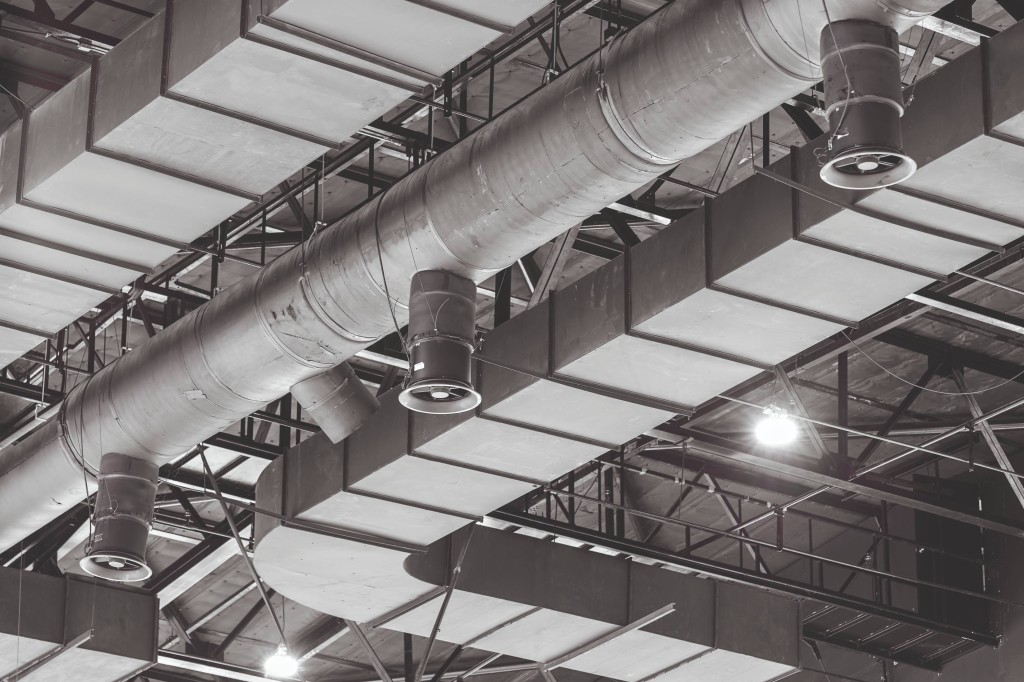The long-term effects of HVAC gas leaks

Shaun Evers, Managing Director of Stonegate Instruments, explains why it’s imperative to stay on top of HVAC gases.
With the NHS estimating that poor indoor quality costs the UK up to £20 billion a year and HVAC systems accounting for up to 40% of a building’s energy usage, the importance of preventing them from developing gas leaks has never been greater.
Heating, ventilation and air conditioning (HVAC) systems are an integral part of modern commercial buildings, playing a vital role in creating safe and healthy environments. By controlling temperature, reducing humidity and eliminating airborne pathogens and allergens, they improve indoor air quality.
Unfortunately, HVAC systems are also one of the largest, if not the single largest, consumer of electricity and can also pose a threat to people, profits, and the planet. Should they develop a leak, it could result in the release of toxic gases which can endanger building occupants, drive up operational costs and have a negative impact on the environment.
Harmful effects of refrigerant gas leaks
Refrigerant gas leaks often go undetected because people cannot always smell, taste or otherwise discern the presence of the gas. In fact, it is estimated that 60% of gas escapes before anyone notices, with many toxic gas leaks going unnoticed until workers start to experience symptoms of distress.
If refrigerant leaks from an HVAC system, it can rapidly evaporate into a lethal gas which can cause frostbite, chemical burns, brain damage, and even asphyxiation. While such serious scenarios are thankfully rare, people are at risk of these and other symptoms, including eye, throat, and skin irritation, if refrigerant gases escape.
While the effect on people can range from mild to extremely serious, an undetected gas leak could also increase energy consumption, driving operational costs higher. In fact, refrigerant gas leaks are the foremost contributor to energy loss in modern HVAC stores. When a leak occurs, the system becomes inefficient and needs to work harder to maintain capacity. This in turn will increase electricity consumption and monthly bills.
Most systems leak refrigerant gases. According to the Carbon Trust, the average leakage rate in UK systems is around 20% per year. This equates to a reduction in efficiency of around 11%, which directly translates into increased energy costs.
According to several studies, a leaking air conditioning unit consumes almost 20% more electricity than a fully functioning one and it has been suggested that a small continuous leak, left unrepaired for three months, could use an extra 10kW in electricity once the leak becomes critical.
Considering the rapid rise in energy prices, this can quickly add up to several thousand pounds.
Smart solutions ensure safety
Because refrigerant gas is both odourless and colourless, detecting a leak can be challenging. While there are a several things that can be done in the case of a suspected leak, nothing can replace the accuracy and efficiency of using specially-designed technology for this task. In fact, designers and manufacturers of electronic equipment for the refrigeration and HVAC industries have worked diligently over the past few years to improve the effectiveness of refrigerant, toxic and combustible gas sensors, with modern sensors boasting greater intelligence and capabilities to combat risks posed by toxic and non-toxic gases.
Because of rapid advances in technology, the latest generation of sensors and systems are smart, self-contained, single-fixed gas sensors which are particularly suited to detecting gases associated with HVAC units. Many of these sensors have a proven return on investment of just two years, and that is without taking into consideration the cost of repairs to an existing faulty system.

Smart sensor equipment with signalling alarms, LED lights that indicate the presence and status of each sensor, as well as audio/visual alarms to alert staff, is also available. These systems help ensure that leaks are quickly identified and repaired at the first opportunity, minimising the risk to the health and safety of building occupants and preventing breaches in regulatory compliance.
Factoring in F-gas regulations
While advancements in gas detection technology can help keep sites and workers safe, there is also an environmental aspect that cannot be ignored. Hydrofluorocarbons (HFCs) have a global warming potential that is more than 3,000 times that of CO2. As it gets released into the atmosphere, it causes ozone depletion and contributes to global warming.
As such, an understanding of fluorinated gas (F-Gas) regulations is vital for anyone working with refrigerant gas, especially considering that the refrigeration, air-conditioning and heat pump sector is the largest source of F-gas emissions owing to refrigerant leakage.
F-Gas regulations, which aim to phase down the CO2 equivalent emissions from HFCs by 79% (relative to 2015) by 2030, have been in force since 2020. The regulations stipulate that equipment must be fitted with a leak detection system if it contains F-Gas equivalent to 500 tonnes of CO2.
They have also raised the requirements for regular gas leak checks. Leakage checks should be carried out at least once every 12 months if the system contains F-gases in quantities of five tonnes of CO2 equivalent or more, at least once every 6 months if it contains F-gases in quantities of 50 tonnes of CO2 equivalent or more, and at least once every three months if the system contains F-gases in quantities of 500 tonnes of CO2 equivalent or more.
Additionally, to prevent the risk of ignition posed by the flammability of some refrigerants, operators are required to maintain in-room concentration levels below the lower flammability level. This requirement is reinforced by safety legislation and standards such as ISO 5149 and EN 378.
While the UK has continued to mirror the European F-gas regulations since Brexit, the government’s own assessment found that the European phase down model may be unfeasible for the UK. As discussions around F-Gas regulations continue, it is important to know that the Environment Agency has the power to impose civil penalties of up to £200,000 for various breaches, including failure to comply with provisions in the regulations or permitting another person to breach those provisions.
Benefits of gas detection technology
Whether a leak results from mechanical damage, equipment failure or poor maintenance, a gas detection system can help prevent a minor incident from becoming a crisis. In fact, gas detection systems offer many benefits. They alert building occupants to the problem, enabling them to evacuate the area and thus minimising their risk of exposure. They ensure that proper procedures are activated so that timely corrective action can be taken. They also minimise the risk of irreversible damage to equipment and prevent potentially-harmful environmental impacts.
Functional and efficient HVAC systems are not only an integral part of modern buildings, they are a fundamental operational requirement. Turning to technology will ensure that, should a refrigerant gas leak occur, it is quickly identified and repaired, helping to keep energy consumption in check, minimising the risk to the health and safety of building occupants, preventing breaches in regulatory compliance, and minimising operational costs.







